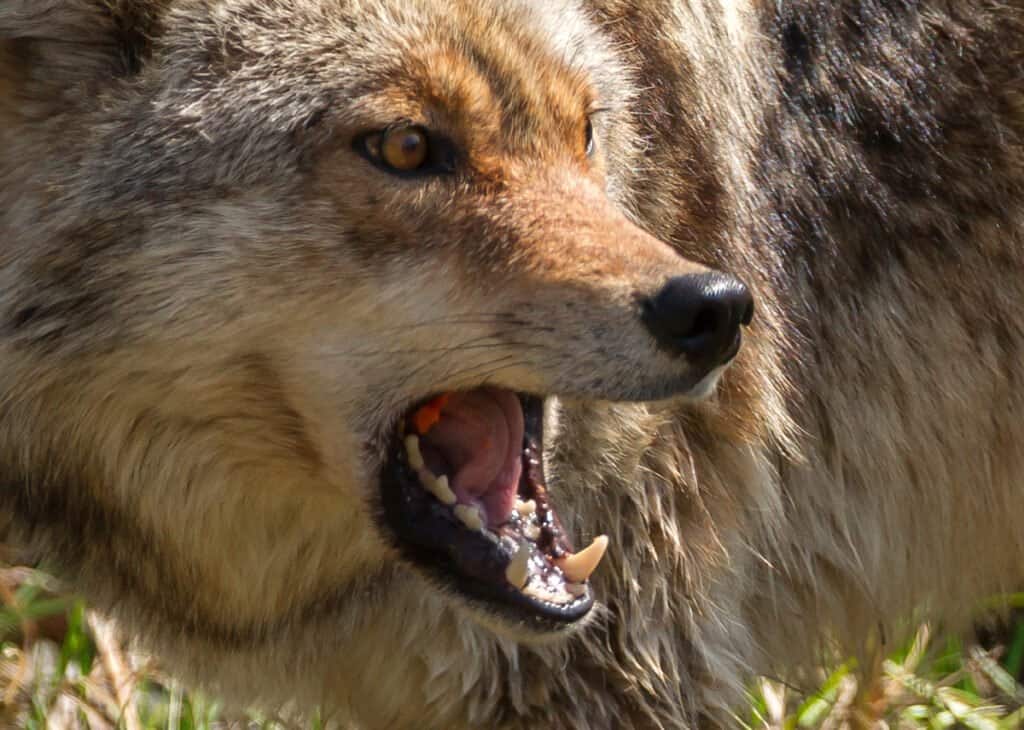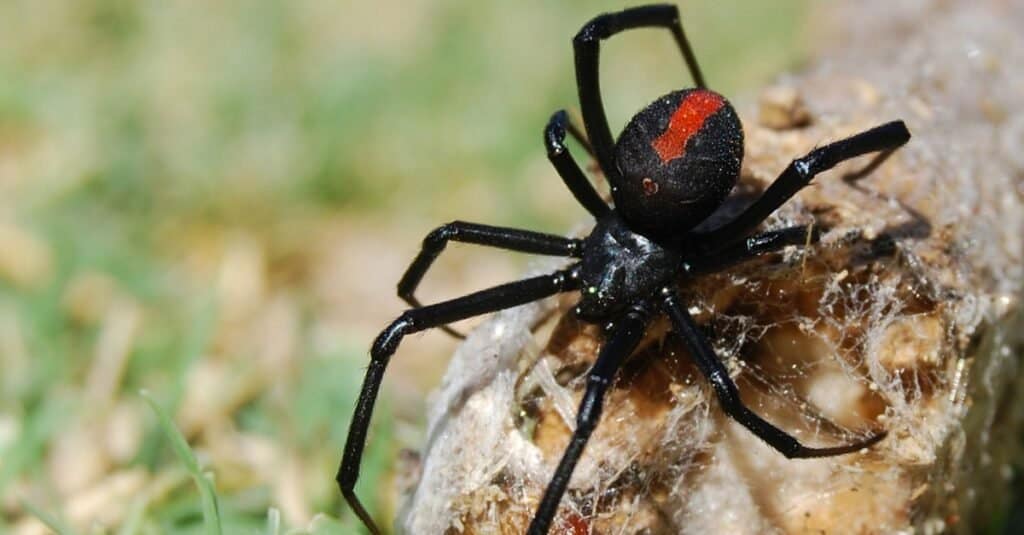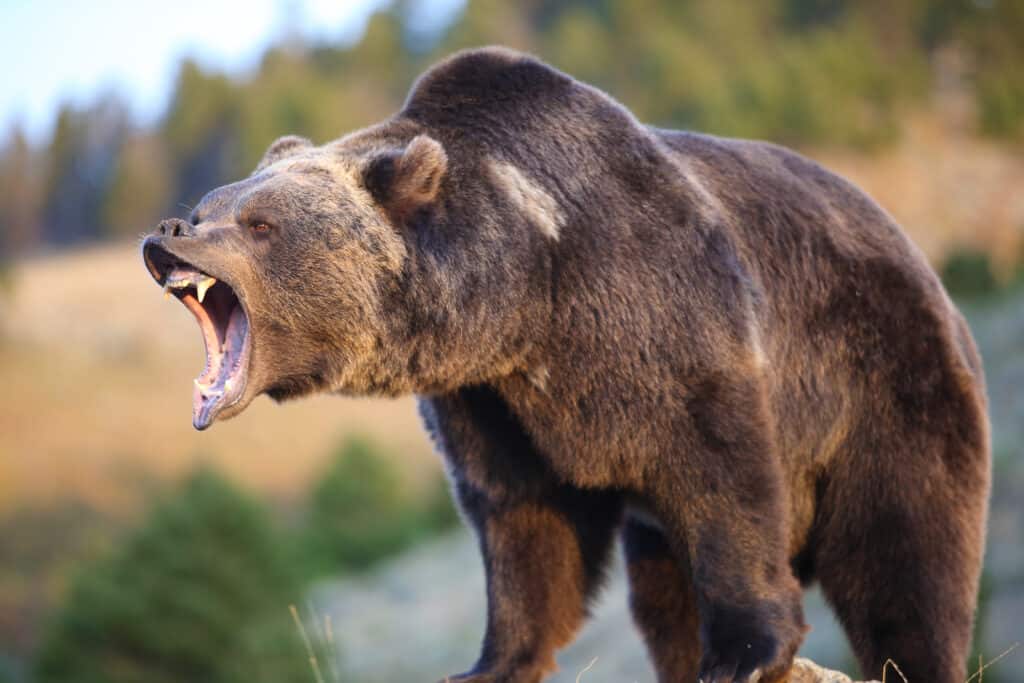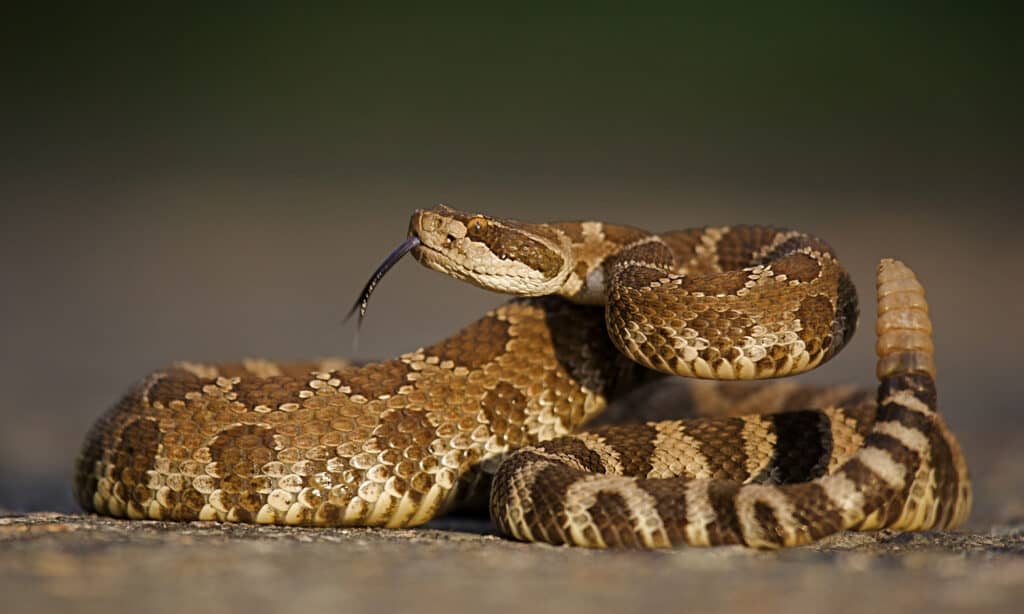The beauty of Washington state cannot be denied. Due to the state’s spectacular geography, there are so many natural wonders to see. The state is home to stunning forests, canyons, desert plains, and mountain tops. The diversity of the land in Washington state also means that it is home to some pretty scary animals. These animals are especially worth watching out for if you plan to go hiking or exploring in Washington state. Check out the 7 most dangerous animals in Washington and where you’ll run into them.
1. Coyotes

Coyotes are found both in densely forested areas and in well-developed areas, like waterfronts around downtown Seattle.
©Derek R. Audette/Shutterstock.com
Washington is home to approximately 50,000 coyotes. Additionally, coyotes can live in a variety of climates because they’re so adaptable. You’ll find coyotes in forest areas, ranch country, and even on the waterfront in downtown Seattle. That makes avoiding a run-in with a coyote kind of impossible. Size-wise, an adult male coyote weighs approximately 25 pounds. As a comparison, the adult female weighs about 20 pounds. A male coyote stands about 25 inches tall when measured at the shoulders. Despite this, there have been no fatal coyote encounters reported in Washington state.
It’s important to remember, however, that coyotes are hunters and can attack when provoked. So be aware of your surroundings and keep a cool head.
2. Black Widow Spiders

Eastern Washington is home to many black widow spiders.
©iStock.com/maria72
Despite the fact that black widow spiders are more common in Eastern Washington, the Department of Health reports that there are a few small populations in Western Washington. They are the most venomous spiders in Washington! As a matter of fact, they are among the world’s easiest-to-recognize spider species. There is no doubt that most people are familiar with the hourglass-shaped red mark that appears on females. Despite the fact that their venom is 15 times more toxic than a rattlesnake’s, they are not aggressive. They rarely bite humans, and they only bite defensively when disturbed.
It’s important to know, however, that the venom can negatively affect your nervous system if you’re bitten. There are those who are only mildly affected by it, and there are those who are severely affected by it. Untreated bites can kill small children, and neurotoxic venom can be fatal if not treated. Black widow spiders are among the most dangerous animals in Washington that should be avoided if possible.
3. Bees & Wasps

Bee and wasp stings cause 50 to 100 deaths each year.
©vallefrias/Shutterstock.com
You may not initially consider them among the most dangerous animals in Washington, but bees and wasps can be pretty lethal. There are two types of bees that are most commonly seen in Washington: the honey bee and the bumble bee. Bees, whether honey or bumble, will aggressively defend their colonies and sting when threatened. In most cases, unless severely provoked, bees tend to be passive when foraging.
The most common types of wasps in Washington are yellowjackets (including hornets) and paper wasps. Similar to bees, wasps sting to protect their colonies and themselves. As the summer and fall progress, yellowjackets become aggressive scavengers, sometimes stinging without provocation. Do not panic if a bee or wasp flies near you. Attempts to swat it may result in it stinging.
4. Bears

Both black bears and grizzly bears live in Washington.
©Dennis W Donohue/Shutterstock.com
According to the Washington Department of Fish and Wildlife, there are about 25,000 bears in the state. Throughout the state, you can see both black bears and grizzly bears. It is common to see black bears in forests and along forest edges throughout Washington. However, it is very rare to see grizzly bears in Washington. Still, there is a small population in the Selkirk Mountains in northeast Washington, as well as in the Okanogan Highlands and North Cascades. It is true that bear attacks are rare in the state, but there is always the possibility that one could occur. Bear spray, a type of pepper spray, is the best way to prevent a bear attack, particularly one involving grizzlies.
5. Cougars

As many as almost 40,000 square miles of Washington state are considered cougar habitats.
©eumates/Shutterstock.com
WDFW estimates that there are approximately 2,100 cougars in Washington State. Wildlife officials estimate that there are 34,168 square miles of forested area in Washington that contain cougars. Most of Washington contains this habitat, with the exception of a large portion of the Columbia River basin. The average weight of a female cougar is less than 110 pounds.
While cougar attacks are rare, they do happen. Bear in mind that cougars are predators, and they will attack if you appear to them like food or if you pose a threat to them.
6. Elk

Elk are big, wild animals known for their aggression. They can attack without warning.
©Tom Tietz/Shutterstock.com
Elk are found throughout Washington, with two separate subspecies primarily occupying opposite sides of the cascade range. Roosevelt elk are found in the coastal ranges of the Olympic peninsula and western slopes of the cascade range. Rocky Mountain elk are found primarily in the mountain ranges of eastern Washington. However, even though they’re herbivores, that doesn’t mean they are always docile and harmless. Just like other famous large American herbivores—especially moose and bison—elk can occasionally be (surprisingly) aggressive or defensive. This is why they made it on our list of the most dangerous animals in Washington.
7. Rattlesnake

Washington state is home to only one species of venomous snake, the western rattlesnake.
©Tom Reichner/Shutterstock.com
Western rattlesnakes are the only snakes venomous enough to pose a threat to humans out of the dozen or so species native to Washington state. Since these snakes aren’t found in Western Washington, you can usually assume that any snake you encounter in the greater Seattle area is not venomous. At maturity, rattlesnakes may reach a length of four feet. They’re recognizable by their wide triangular head, diamond-shaped scales on the back, and the rattle at the end of their tail. Humans are not targeted by rattlesnakes. They are therefore unlikely to bite unless they feel threatened. You should, however, avoid approaching them if you can.
The photo featured at the top of this post is © Sari ONeal/Shutterstock.com
Thank you for reading! Have some feedback for us? Contact the AZ Animals editorial team.






